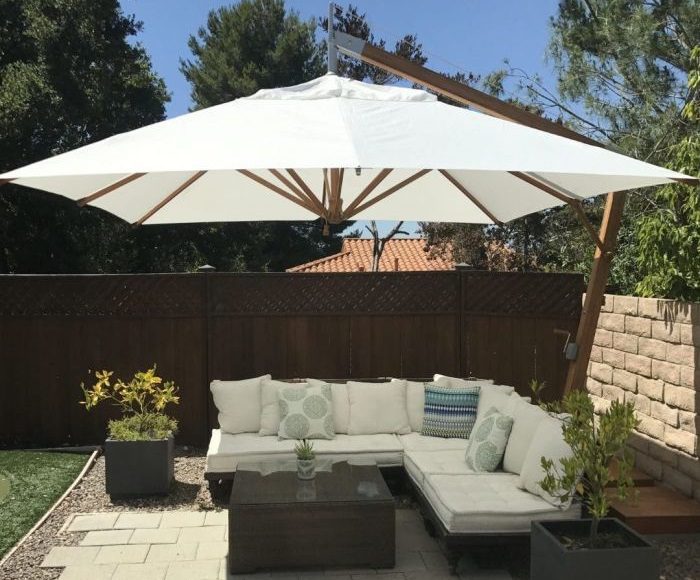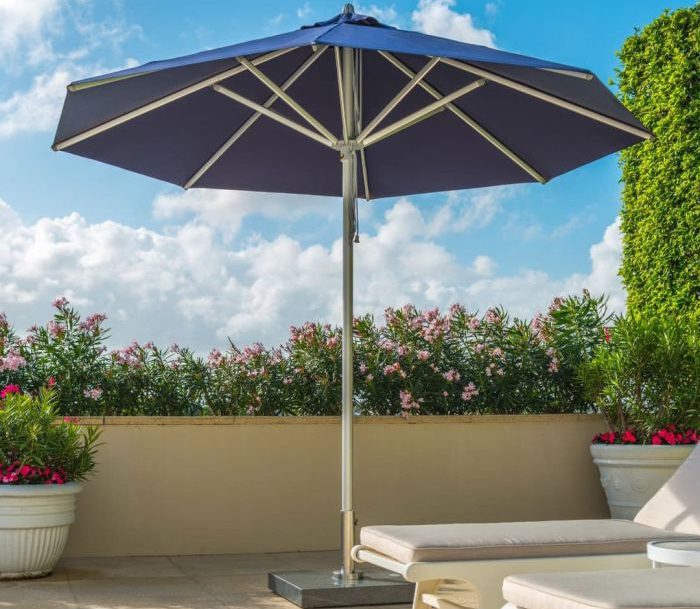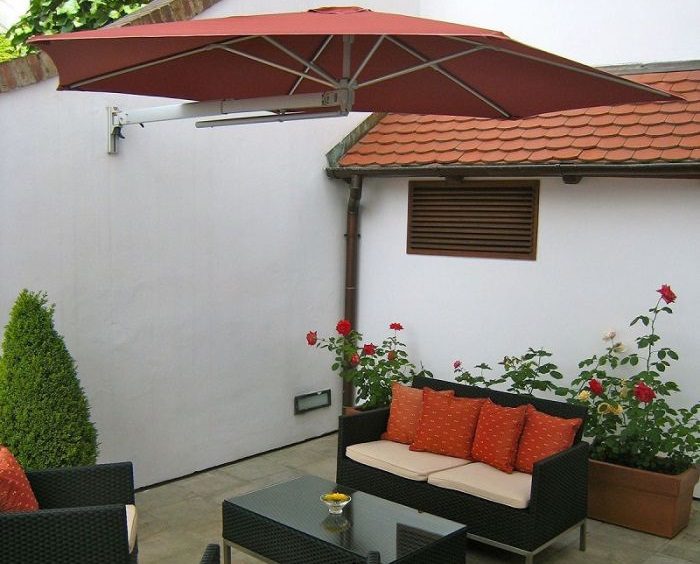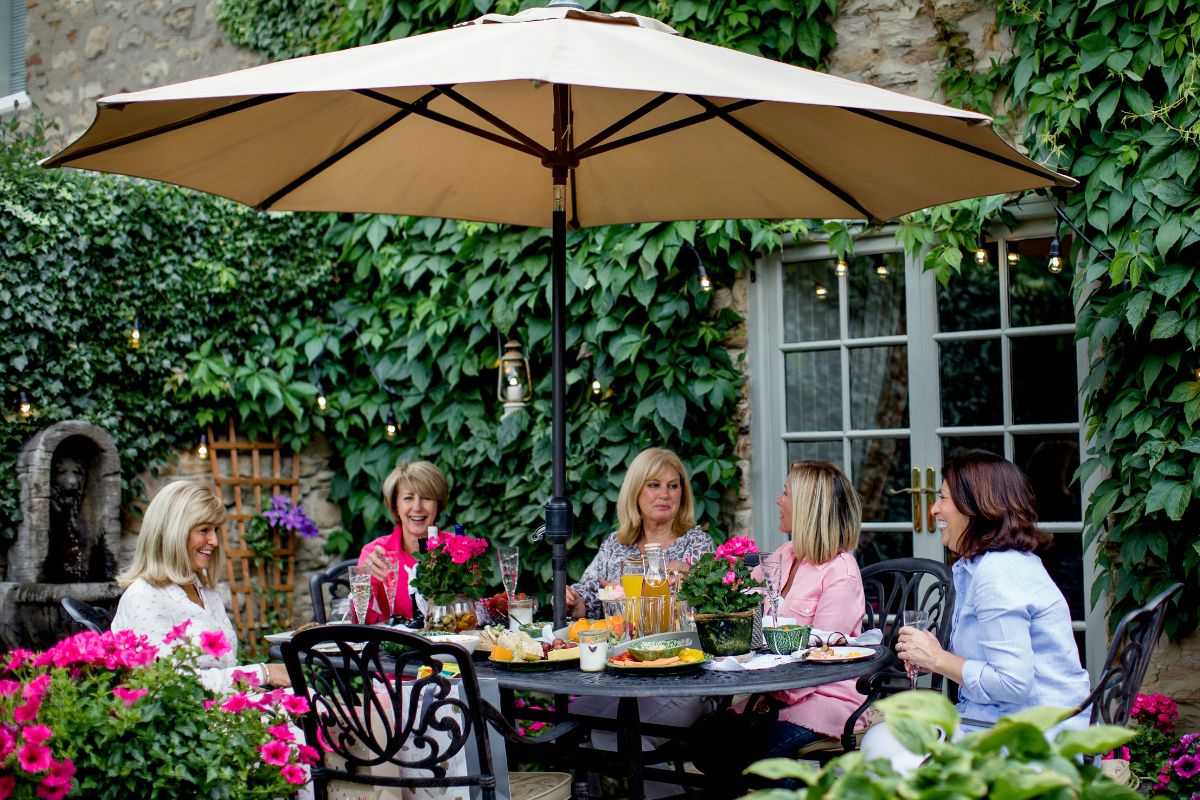One of the best ways to enjoy a garden is by sitting under some shade and enjoying the well-maintained view of the landscape. Garden Parasols, sometimes referred to as garden umbrellas, provide just that required shade to enjoy the view. But before you invest in one of the parasols for garden use, it’s best to know what types of parasols are available and their pros & cons.
Before we start off, let’s briefly get to know the three ideal categories of garden umbrellas – cantilever parasols, center-pole parasols, and wall-mounted parasols. Each of these parasols for the garden has its own set of strengths and weaknesses.
Read on more of this informative guide about the different parasols and the benefits of each. By the end of this article, you will be able to make the right decision before purchasing a parasol that suits your garden.
Types of Parasols
With summers getting hotter each year, it is ideal to think about adding a parasol to your garden or other outdoor spaces such as terraces, poolsides, and patios. Well, garden umbrellas are not just about shade and protection from the weather, but also add beauty to the outside landscape.
Parasols are available in a wide range of sizes and styles, each with its own unique features. It has its own pros and cons, which you will read soon after getting to know each of the different parasols.
For those who need a large amount of open space under their parasol, garden cantilever parasols, also known as free arm parasols or overhanging parasols, are a great choice. Space and comfort are optimized with this type of garden parasol.
Centre-pole parasols provide a traditional look complemented by larger canopies when compared to cantilever canopies. They are very much similar to hand-held umbrellas, but the only difference is that they are free-standing garden parasols with a base.
Wall-mounted parasols are designed especially for urban spaces and offer a sleek design for those looking for style over practicality. With all three types providing different benefits, invest some time researching which one best suits your needs and will give you years of shaded pleasure!
Cantilever Parasols – Pros & Cons
Cantilever parasols are highly popular with avid newspaper readers and many other alfresco experience lovers. The reason behind that is there is no obstruction of the mast. It also provides plenty of shade while allowing enough room to place other furniture or even stretch a leg beneath the canopy.
An overhanging cantilever umbrella gives one-of-a-kind beauty to outdoor landscapes when placed near a poolside, on a patio, or on a terrace.

Pros of Garden Cantilever Umbrellas:
- Can provide much-needed shade on hot summer days: The garden cantilever parasol comes with a rotatable canopy that can provide shade throughout sunny days from any direction.
- Adds a stylish touch to your outdoor space: The vibrant colors of that canopy and the mast material itself, add beauty to your private outdoor space.
- Movable and adjustable, so you can adjust the angle of the umbrella easily: You can move your parasol with a base that has wheels around the garden to the spot that you desire. Furthermore, the canopy can be adjusted or rotated for shade from any angle.
Cons of Garden Cantilever Umbrellas:
- Requires time to assemble: A garden cantilever parasol is a beautiful addition to your outdoor landscape but requires time to assemble it. Not too long, but it’s a completely DIY product that can be ready to provide shade in a few hours.
- Bulky to store: If you plan to go on a long vacation and want to disassemble your cantilever umbrella and store it, know that it might require a bit of space due to its enormous size.
- Must be taken down during inclement weather for safety reasons: Since these umbrellas are overhanging, it is mandatory to close the umbrella when the weather conditions are rough.
- Expensive if you want to purchase higher quality materials: The cost of this umbrella is quite expensive due to the high quality of the materials and mechanism that is behind the making of this wonderful umbrella.
Centre-Pole Parasols – Pros & Cons
Centre-pole parasols are highly popular in all gardens. The reason behind that is the umbrella has a centre-pole or centre mast that can go through garden tables. It also provides plenty of shade while also providing a dining experience with the canopy opening directly above.
The canopy of the centre-pole model gives an experience of fine dining quality in outdoor landscapes when placed near a poolside, on a patio, or on a terrace.

Pros of Garden Centre-Pole Parasols:
- Ideal for DIYers: The center-pole umbrellas are easy to install with no specialized tools or knowledge required. Just following the instructions provided can have the parasol set up for optimal shade within less time.
- Vibrant additions to gardens: These umbrellas are available in a variety of colors, shapes, and sizes to best suit your outdoor space, which adds a vibrant look to the landscape.
- Lightweight and portable: This makes the parasol easily moved around your property.
Cons of Garden Centre-Pole Parasols:
- Requires Weights: This will require a weight or an anchor to be securely fixed to the ground. This makes it susceptible to high winds if not adequately secured
- Can break under heavy windy conditions: If the parasol is placed in a completely open place where wind conditions are heavy, there are chances that the canopy could break apart in windy conditions unless wind tunnel tested.
Wall-Mounted Parasols – Pros & Cons
The telescoping arm of a wall-mounted parasol makes it simple to extend the shade to its full width. The arm can be rotated more than 90 degrees because of the wall bracket.
A wall-mounted umbrella gives optimal shade when placed on a patio, above decks, or on a terrace.

Pros of Wall-Mounted Umbrellas:
- Provides much-needed shade on hot summer days: Wall-mounted parasols provide a convenient solution for sun protection, as they are attached to walls and don’t take up too much space. It also helps spend time on your terraces.
- No obstructions from Mast: Wall-mounted umbrellas have no poles that come in between while moving around the outdoor space.
- Can be left outdoors for longer times: These umbrellas can be left mounted to the wall throughout the year regardless of the weather conditions. Just make use of a canopy protective cover, and it should be fine.
Cons of Wall-Mounted Umbrellas:
- Requires time to assemble: A wall-mounted parasol is a beautiful addition to your outdoor landscape but requires time to assemble it. Not too long, but it’s a completely DIY product that can be ready to provide shade in a few hours.
- Limited to just small places: The shade provided could be limited to just a small portion of the outdoor area.
Conclusion
Each type of parasol offers its own unique benefits; Cantilever parasols offer excellent shade coverage, centre-pole parasols provide stability and wall-mounted parasols offer easy installation. There are also some cons to consider; Cantilever parasols may require a larger garden space, centre-pole parasols can be difficult to move and wall-mounted parasols may not be suitable in windy conditions. Ultimately, choosing the right parasol depends on individual needs and preferences.












